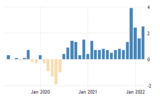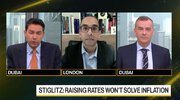- Joined
- 20 July 2021
- Posts
- 12,543
- Reactions
- 17,416
i have seen so many definitions change in the last 3 years , i wasn't sure i was up-to-date
thanks
thanks
View attachment 141850
Kogan was a $13 stock and is now trading in the $3 range over here too.
Of course. But bricks & mortar retail's been in structural decline for quite some time. Etail has been pasting retail for years, and yet we see etail getting slammed as well.Online businesses were always going to suffer once mandatory lockdowns became a thing of the past...
HAVE THEY ??Online businesses were always going to suffer once mandatory lockdowns became a thing of the past...
actually i was thinking retail property REITs were going to be the first squeezed hard , and maybe the office REITs not far behind them , and then the ( B&M ) retailers that survived the last two yearsOf course. But bricks & mortar retail's been in structural decline for quite some time. Etail has been pasting retail for years, and yet we see etail getting slammed as well.
Point is, if etail's taking a hit then retail's going to get an even bigger one.


As prices soar, consumers aren't splurging on bigger-ticket items, such as televisions and exercise equipment. The company noted that there were "lower-than-expected sales in discretionary categories," and Target was forced to write down the value of excess inventory that's stuck in warehouses

( no going out to party overnight and stuff )


Least financially literate person here but even blind Freddy could have seen printing trillions of dollars for COVID relief and then billions more into Ukraine + sanctions was never going to end well for the average Joe.View attachment 142115
"We think the fed is going to realise that the only thing they're reducing is growth".
BINGO. They cannot bring this inflation down without plunging us into recession. This IS stagflation - it's either high inflation or recession, those are the options, and Yellen's gone on record saying they won't even consider raising their 2% inflation target. Ergo, it's recession.
View attachment 142116
Think about the last time this shift occurred so rapidly
To be fair, about half of it is thanks to the sanctions. Without them, we'd be sitting at a much more moderate official stat of about 5ish% rather than the 8-9% we see now.Least financially literate person here but even blind Freddy could have seen printing trillions of dollars for COVID relief and then billions more into Ukraine + sanctions was never going to end well for the average Joe.
To be fair, about half of it is thanks to the sanctions. Without them, we'd be sitting at a much more moderate official stat of about 5ish% rather than the 8-9% we see now.
Hello and welcome to Aussie Stock Forums!
To gain full access you must register. Registration is free and takes only a few seconds to complete.
Already a member? Log in here.